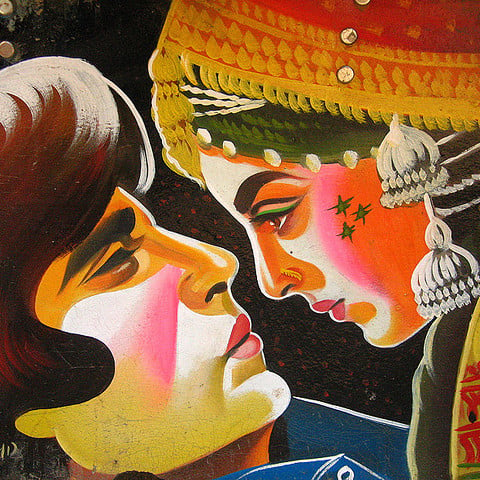Why Translating Movies Is Tough Work

Meena Kadri/Flickr
When translating movies between languages, there are many obstacles that require consideration so as to ensure the audience will get to enjoy the story’s true meaning.
Recently, news broke that Hollywood plans to remake a beloved cult Japanese horror film, Audition. Although the source material will, naturally, be adjusted for a new market, many fans of the original are likely thrilled to hear that there will soon be a new iteration of the truly terrifying tale.
The American production will tell the story of a man named Sam Davis, a widower whose wife passed away about seven years earlier and is living with his son. A filmmaker friend encourages him to hold fake dating auditions to meet new romantic prospects, and soon he meets and falls in love with a ballerina. From here, the story takes an incredibly dark and grisly turn.
Horror fans are sure to appreciate this particular American retelling of this ghastly story, but adopting foreign hits into English-language films is by no means new. The Ring and The Grudge are two other Japanese horror movies that enjoyed massive domestic success in the United Staes. More recently, Director Spike Lee released Oldboy, a South Korean mystery thriller. A quick search into American hit films with foreign roots would reveal a huge number of movies, in many genres, that began as foreign language productions. How, then, do filmmakers go about translating not just the actual language of a script, but transplanting a movie experience from one culture to a totally different one, while still remaining true to the story?
Overcoming Cultural Differences
Translation must focus on much more than vocabulary and grammar – it needs to prioritize cultural variance. Films rely heavily on the emotional investment of the audience into characters and plot lines. Filmmakers need the people watching the movie to care what happens, but, sometimes, cultural differences can impede that endeavor.
Consider some of the extremely different values between certain cultures. A conflict in a Japanese production which concerns the critical importance of the family unit and collective action probably will not interest many Americans, who typically champion rugged, lone rebel figures. Similarly, an American film that paints a vivacious, independent woman as a self-made hero will not find a welcome audience in certain socially conservative, Middle Eastern communities who value traditional, more subservient female roles. So, to navigate and offset some of these wildly disparate cultural norms, it is necessary to know the exact right words to use at every moment of the film.
Maintaining Nuances and Tone
Translators also have to attempt to maintain the general tone of original work. There can be some major cultural differences that make this a very difficult task. Idioms, expressions, jokes, and sarcastic remarks can be some of the most challenging.
For instance, American humor is notorious for its heavy employment of sarcasm. Japanese culture has no equivalent for sarcasm. So, while an American might joke in English, “I love the DMV,” a literal Japanese translation would end up communicating that the speaker sincerely adores the DMV. Idioms can also be difficult and the translator must “go the extra mile” to ensure correct meanings. No, the translator walking an extra mile will have no effect on the meaning. See?
Trying to come up with the right translation to convey the same tone of someone doing a complete work, a thorough job or working extra hard to get something accomplished can be difficult. Are you lost? Jokes too, especially those with hidden meanings or innuendos can be a challenge to tackle as there may not be an exact match in the translated language.
Translators must be very creative and thoughtful in order to communicate culturally significant, diverse, creative expressions between languages.
Untranslatable Words
When there is a word-for-word match, translation is very easy, but sometimes specific words themselves simply do not translate. They have no true equivalent in another language.
One example is the Yiddish word, “Shlimazl.” In Yiddish, it refers to a person who is constantly and unfailingly unlucky. The Scottish verb “to tartle” literally means to hesitate when trying to remember a person’s name. Communicating these ideas requires several English words, or full phrases.
However, it can also be a problem when there are several words in another language and only one English word is used to describe them. In Hindi, love can be “Mohabbat” or “Ishq,” or “Pyar.” But in English we only have one word, “love.” This can be inadequate when trying to express the nuances that exist for “love” in Hindi. In translating a romantic film, this might clearly prove to be very important.
Want to confirm that you are appreciating your favorite foreign language book, graphic novel or film as fully as possible? Check your comprehension with a Level Test to see how you do and find out how to hone your skills. To further your foreign language skills, contact Language Trainers today and learn about our course package options.
